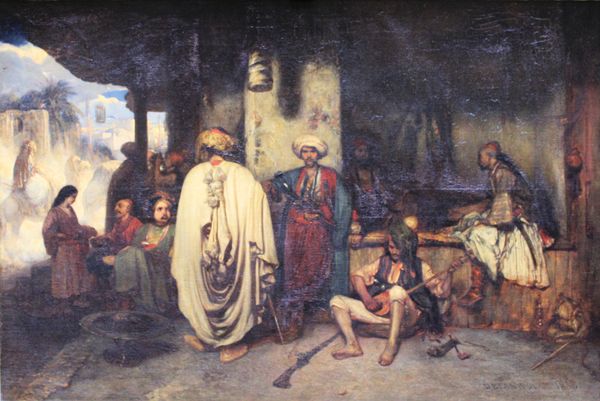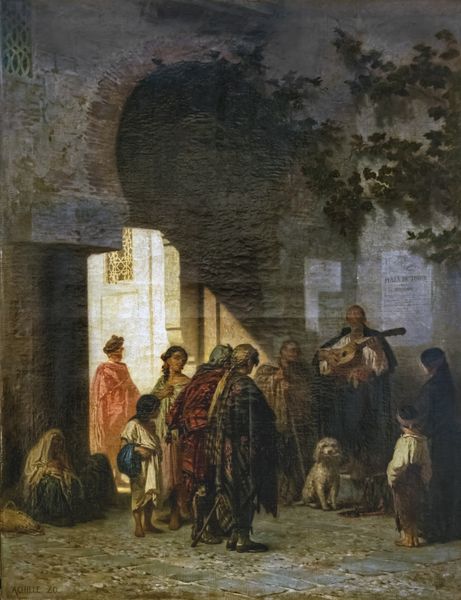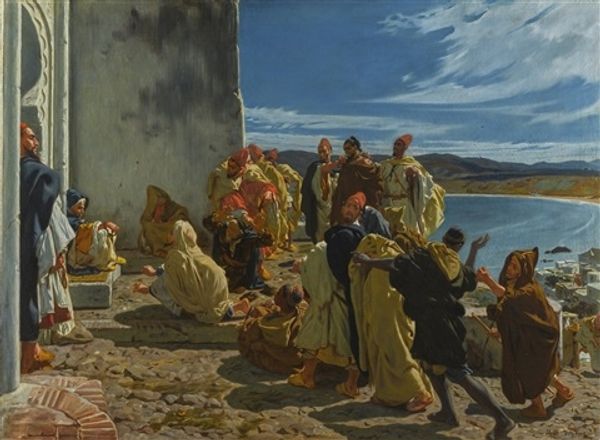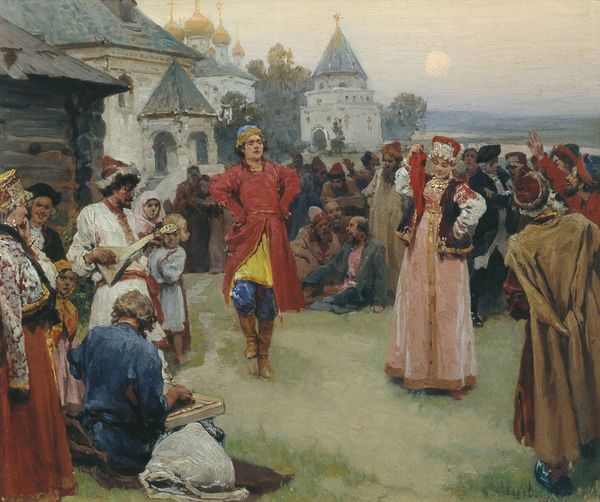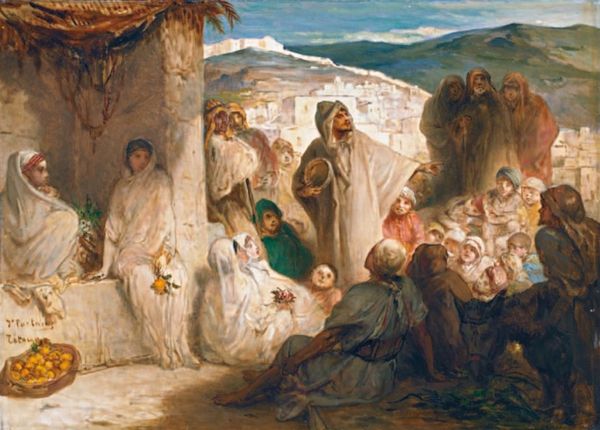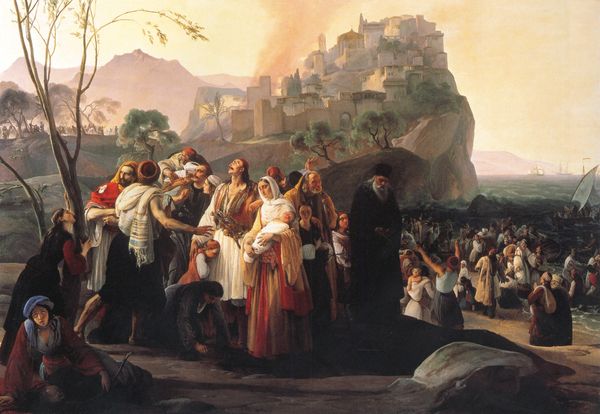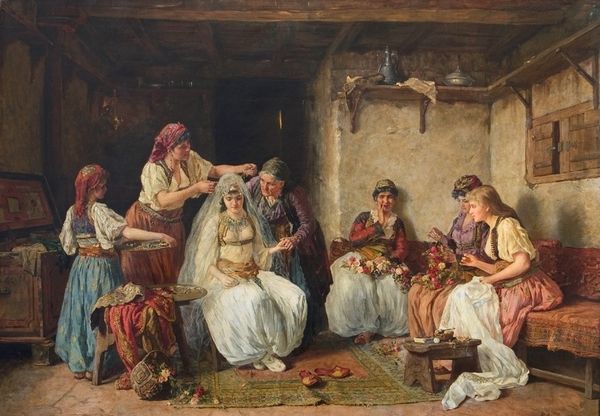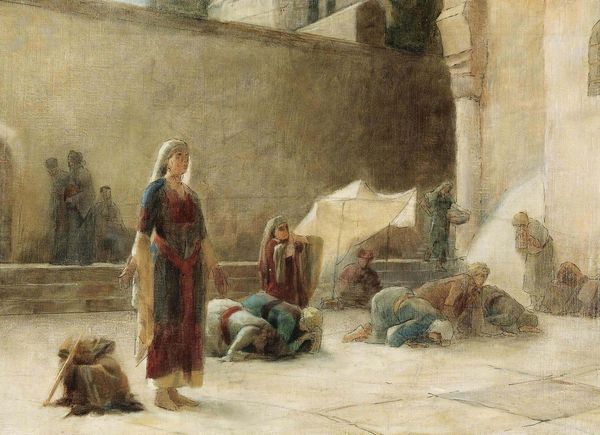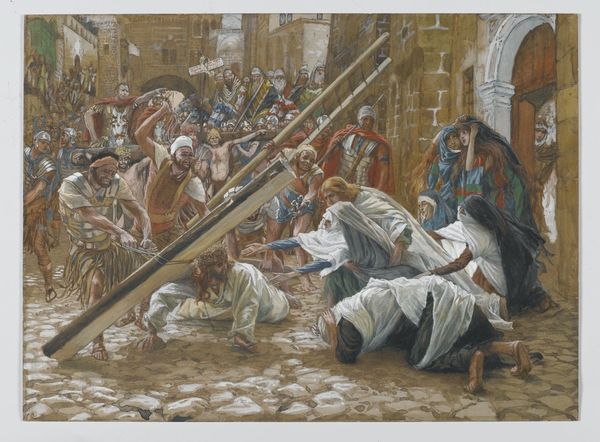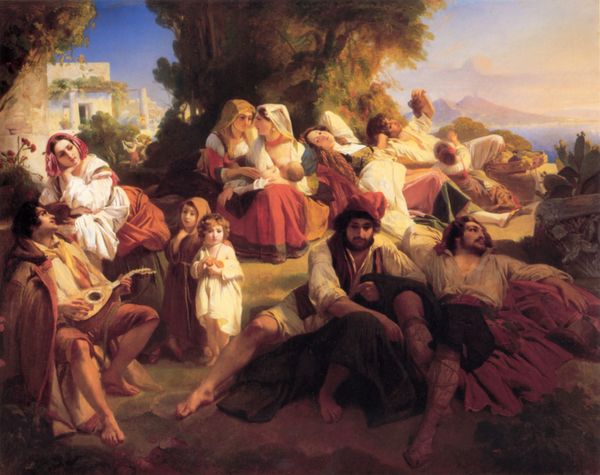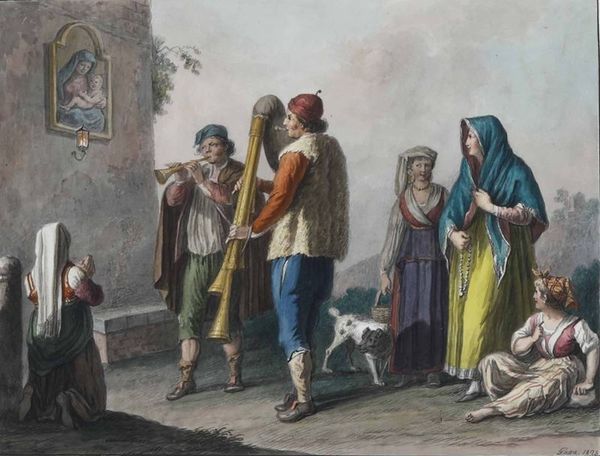
Insult to prisoners Episode of the crusade against the Albigenses in 1211 1875
0:00
0:00
albertmaignan
Musée de Picardie, Amiens, France
Copyright: Public domain
Curator: Immediately striking, isn't it? This painting titled "Insult to prisoners Episode of the crusade against the Albigenses in 1211," was completed by Albert Maignan in 1875. Editor: Absolutely, it's a bit overwhelming, even chaotic. The stark contrast between the downtrodden prisoners and the seemingly indifferent figures near the front is rather intense. Curator: Indeed. Maignan clearly intended to portray a critical episode within the Albigensian Crusade, a conflict driven by religious and political motives with far-reaching consequences for the Languedoc region and broader European history. We can see how academic art frequently addressed such pivotal historical events. Editor: The composition is key here, the way Maignan uses the architecture, that massive wall looming over the figures, contributes to the feeling of oppression. The dark shades of the foreground figures contrast sharply with the lighter stone, heightening the somber mood, doesn’t it? Curator: I agree completely. Consider also the expressions of the onlookers, ranging from pity to apparent amusement. Maignan used this emotional range to evoke debate on the moral cost of these so called religious wars, prevalent sentiments echoed during the rise of realism and its engagement with socio-political critiques. Editor: Yes, and look at the bodies on the ground, so realistically rendered, their postures communicate pain and hopelessness. The artist clearly has skill with representing physical form but places less emphasis on any decorative sensibility. Curator: Exactly. It's difficult not to contemplate the ethics of this event when confronted with such human agony set against the backdrop of a crusade meant to enforce religious doctrine. It serves as an institutional critique in itself, a kind of pictorial accusation. Editor: Well, it’s certainly effective in generating reflection, perhaps because the formal austerity makes the emotions expressed feel so unvarnished, so raw. It’s the skillful application of those dark, earthy tones and stark realism to elicit empathy. Curator: Precisely. And through such empathy, Maignan succeeds in inviting viewers to reconsider these power imbalances and their ripple effects on vulnerable communities. The work is in the Musée de Picardie in Amiens, in France. Editor: Well, examining Maignan’s compositional decisions offers a stark perspective into history painting and it also allows us to decode just how artists leverage visual language to engage emotions.
Comments
No comments
Be the first to comment and join the conversation on the ultimate creative platform.
